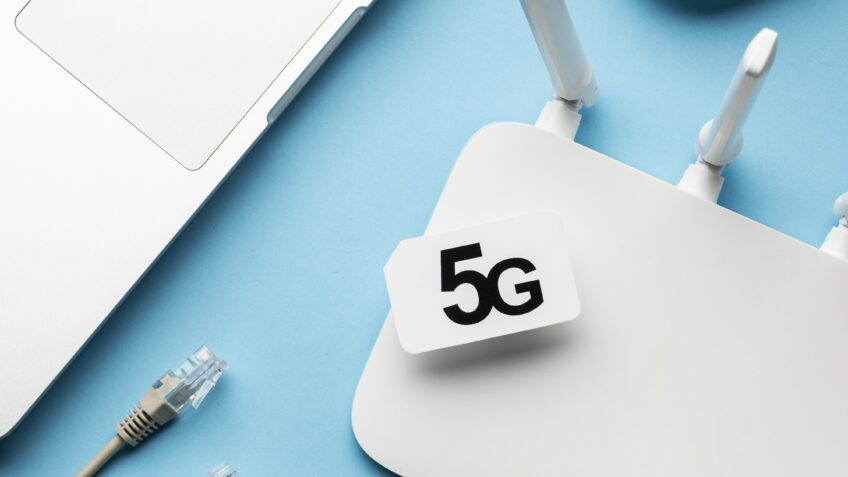Choosing the best Internet Service Provider (ISP) for your home is a crucial decision, as it affects everything from your work and entertainment to your ability to stay connected with friends and family. With a plethora of options available, it can be overwhelming to navigate the different plans, speeds, and packages. This guide will help you assess your needs and select the best ISP based on various factors, ensuring you get reliable, fast, and affordable service.
1. Assess Your Needs
Before diving into comparing different ISPs, it’s important to understand your specific internet requirements. Consider how many devices will be connected at once and the type of activities you’ll be doing. For example:
- Basic Browsing and Social Media: If your household primarily uses the internet for browsing websites, checking emails, and social media, you don’t need the fastest or most expensive plan.
- Streaming and Gaming: For households that stream videos in HD or 4K, or play online games, you’ll need an internet plan with higher speeds and low latency.
- Remote Work or Study: If you work or study from home, a reliable connection with high upload speeds is necessary for video conferencing, file sharing, and other collaborative tasks.
- Smart Home Devices: With smart TVs, thermostats, security cameras, and other connected devices, you may need a higher-speed plan to ensure smooth operation without interruptions.
2. Identify Available Providers in Your Area
Not all ISPs operate in every region, so the first step is to find out which providers are available in your area. This can depend on your location, and rural or remote areas may have fewer choices compared to urban centers. Some popular ISPs include:
- Cable Internet Providers: Comcast, Spectrum, Cox
- Fiber Optic Providers: AT&T Fiber, Google Fiber, Verizon Fios
- DSL Providers: CenturyLink, Frontier
- Satellite Internet Providers: HughesNet, Viasat (ideal for rural areas where cable or fiber may not be available)
You can use websites like BroadbandNow or directly visit the websites of ISPs to check availability.
3. Consider Speed Requirements
The speed of your internet connection is often the deciding factor when choosing an ISP. Megabits per second (Mbps) or gigabits per second (Gbps) are the units used to measure internet speed, and larger values often correspond to faster speeds. However, the right speed for your household depends on your usage:
- Basic Use: For browsing and emailing, speeds between 25 to 50 Mbps should suffice.
- Streaming: For streaming HD video, a minimum of 50 Mbps is recommended, and for 4K streaming, aim for at least 100 Mbps.
- Gaming and Work: For online gaming and video conferencing, speeds between 100-300 Mbps ensure a smooth experience. A lower ping (latency) is also critical for gaming.
- Multiple Users/Devices: If multiple people are using the internet simultaneously, especially for data-intensive activities like streaming and gaming, consider plans with speeds over 200 Mbps to avoid slowdowns.
4. Check the Data Cap and Bandwidth
Many ISPs have data caps, limiting how much data you can download or upload each month. These limits may vary from plan to plan, and exceeding the cap may lead to throttling (slower speeds) or additional charges. If your household regularly streams, works from home, or uses large amounts of data, look for plans with no data caps or high limits.
Bandwidth is another crucial factor, especially if you have multiple users. Higher bandwidth allows more devices to connect without a noticeable slowdown. If your household has multiple devices accessing the internet simultaneously, such as smartphones, smart TVs, laptops, and gaming consoles, ensure that your plan has sufficient bandwidth to handle the load.
5. Reliability and Customer Support
Reliability is key when choosing an ISP. Look for providers that have a reputation for consistent service and minimal downtime. You can check reviews on websites like Trustpilot or the Better Business Bureau to gauge customer satisfaction.
Good customer service is equally important. When something goes wrong with your internet connection, you want to be able to get support quickly and efficiently. Choose an ISP with responsive customer service, ideally with 24/7 support via phone, chat, or email. Reading customer reviews can provide insights into how well an ISP handles technical issues and service interruptions.
6. Compare Pricing and Plan Options
Internet prices can vary significantly depending on the provider, plan, and region. Compare the costs of different ISPs in your area to determine the most affordable option for your needs. Keep in mind that some ISPs offer bundled packages that include TV, phone service, or home security, which might provide extra value.
However, avoid overly complex bundles if you don’t need the additional services. Focus on finding a plan that offers the best value for the internet speed and features you require.
7. Consider Fiber vs. Cable vs. DSL
- Fiber Optic Internet: Fiber is the fastest and most reliable option, offering speeds that can exceed 1 Gbps. It’s ideal for households with high-demand internet usage but may not be available everywhere.
- Cable Internet: Cable internet is widely available and offers good speeds, usually between 50-200 Mbps. It’s a solid choice for most households, but it may not have the same speed or reliability as fiber.
- DSL Internet: DSL is often the slowest option and may be the only choice in some rural areas. While it’s more affordable, it may not meet the needs of households with high-speed demands.
Conclusion
Choosing the best ISP for your home involves balancing speed, reliability, cost, and customer service. By assessing your needs, comparing providers, and understanding the terms of your contract, you can make an informed decision that ensures a smooth, fast, and dependable internet experience for you and your family.






